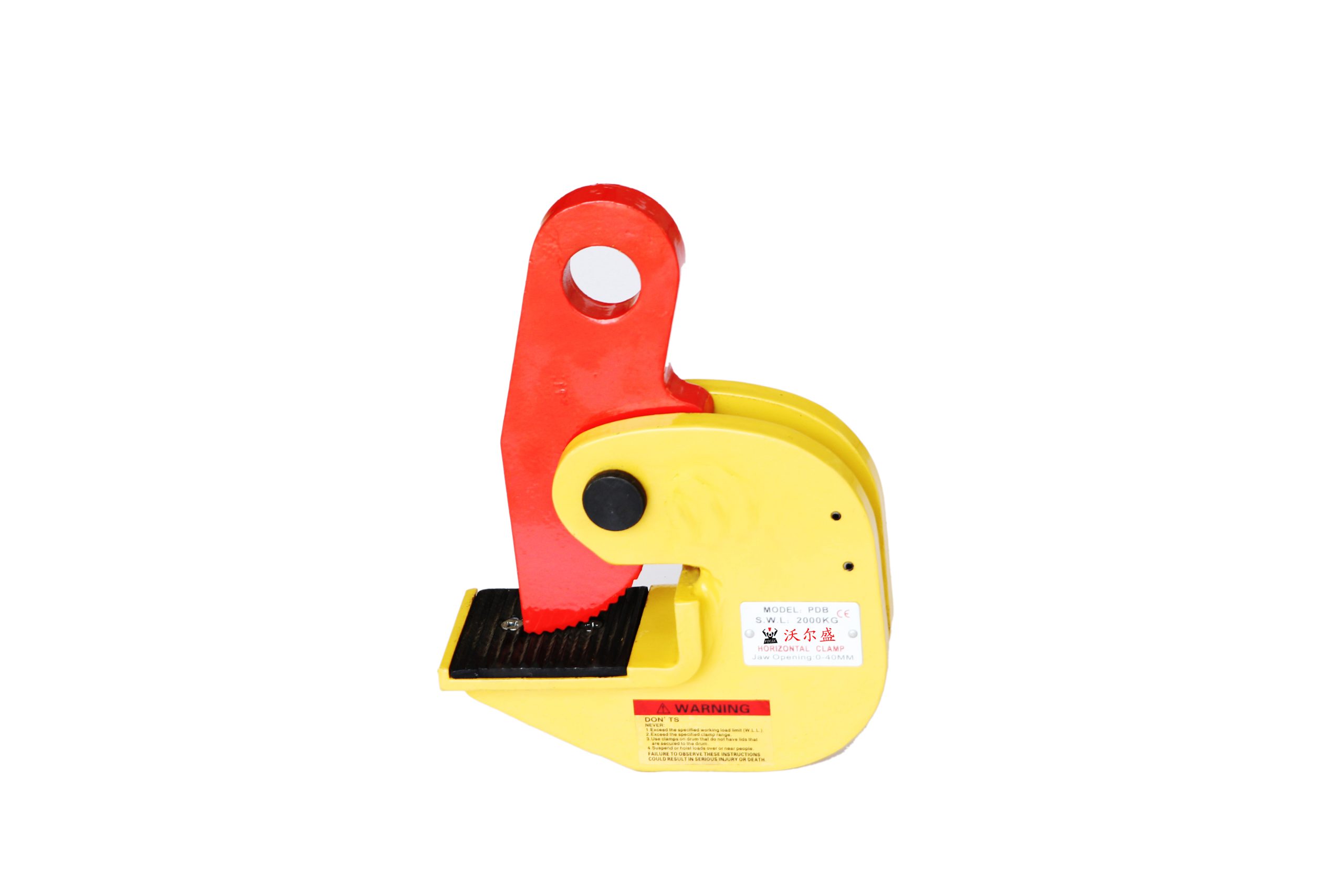TEL:+86 13179668188 E-MAIL:alina@volsn.com
Steel plate lifting clamps are devices used for handling steel plates, widely used in industries such as steel manufacturing and machinery. To extend the service life of the lifting clamps and maintain their efficient and stable performance, daily maintenance and care are crucial. Here are some tips for extending the service life of steel plate lifting clamps:
1. Regular Inspection
- Inspect the appearance and structure: Regularly check the external condition of the steel plate lifting clamp for cracks, deformation, corrosion, or other issues. Address any problems promptly.
- Inspect the gripping components: Pay special attention to the condition of the claws that grip the steel plate. Ensure that they are not worn or loose, ensuring a secure grip to prevent the plate from falling.
- Check the locking mechanism: Ensure that the locking mechanism is functioning properly. A loose locking device can compromise safety.
2. Cleaning and Lubrication
- Clean the lifting clamp: After extended use, steel plate lifting clamps may accumulate dust, grease, or metal shavings, which can affect normal operation. Clean the clamp using a clean cloth and appropriate cleaning agents, avoiding harsh chemicals.
- Lubricate moving parts: For parts with moving joints or gears, regularly apply lubricating oil or grease. Proper lubrication reduces friction, minimizes wear, and prolongs service life.
3. Avoid Overloading
- Follow load specifications: Each steel plate lifting clamp has a rated load capacity. Overloading can lead to excessive wear or damage to the clamp components, and in severe cases, equipment failure or safety accidents.
- Avoid shock loading: Ensure smooth handling of the steel plate during operation to prevent sudden impacts on the clamp, which can exert excessive force on the device.
4. Regular Inspection of Electrical and Control Systems
- Check the electrical system: If the steel plate lifting clamp is equipped with an electrical or hydraulic control system, regularly inspect the wiring and hydraulic oil levels to ensure no leakage or poor connections.
- Check the control system: Ensure that the control system is operating properly, and confirm that the operating buttons and circuits are functioning. Replace any damaged components to avoid electrical failures affecting the clamp’s operation.
5. Storage and Anti-Corrosion
- Proper storage environment: When not in use, store the steel plate lifting clamp in a dry, ventilated environment, avoiding long-term exposure to moisture or harsh conditions to prevent rust and corrosion.
- Anti-corrosion treatment: Regularly apply anti-corrosion treatments such as rust-proof oil or coatings, especially to the gripping parts and moving joints, to enhance resistance to corrosion.
6. Maintain a Regular Maintenance Log
- Keep a maintenance record: It’s recommended to keep a record of each maintenance, inspection, and repair activity, noting the maintenance tasks, inspection dates, issues found, and solutions applied. This helps track the clamp’s condition and promptly identify potential problems.
By following these maintenance and care tips, the service life of steel plate lifting clamps can be effectively extended, reducing equipment failures and ensuring safe operation.
